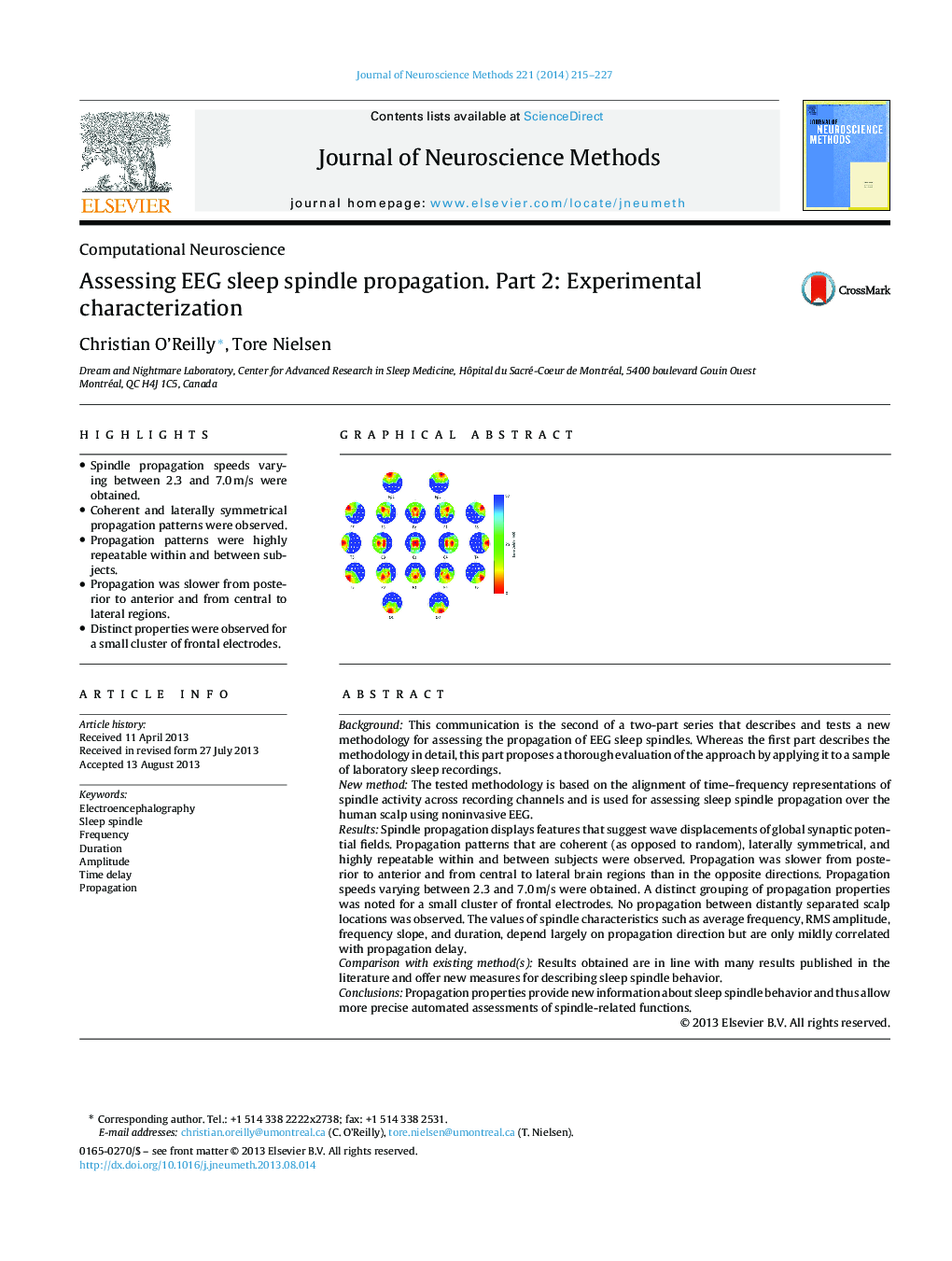| کد مقاله | کد نشریه | سال انتشار | مقاله انگلیسی | نسخه تمام متن |
|---|---|---|---|---|
| 6268845 | 1614648 | 2014 | 13 صفحه PDF | دانلود رایگان |

- Spindle propagation speeds varying between 2.3 and 7.0Â m/s were obtained.
- Coherent and laterally symmetrical propagation patterns were observed.
- Propagation patterns were highly repeatable within and between subjects.
- Propagation was slower from posterior to anterior and from central to lateral regions.
- Distinct properties were observed for a small cluster of frontal electrodes.
BackgroundThis communication is the second of a two-part series that describes and tests a new methodology for assessing the propagation of EEG sleep spindles. Whereas the first part describes the methodology in detail, this part proposes a thorough evaluation of the approach by applying it to a sample of laboratory sleep recordings.New methodThe tested methodology is based on the alignment of time-frequency representations of spindle activity across recording channels and is used for assessing sleep spindle propagation over the human scalp using noninvasive EEG.ResultsSpindle propagation displays features that suggest wave displacements of global synaptic potential fields. Propagation patterns that are coherent (as opposed to random), laterally symmetrical, and highly repeatable within and between subjects were observed. Propagation was slower from posterior to anterior and from central to lateral brain regions than in the opposite directions. Propagation speeds varying between 2.3 and 7.0Â m/s were obtained. A distinct grouping of propagation properties was noted for a small cluster of frontal electrodes. No propagation between distantly separated scalp locations was observed. The values of spindle characteristics such as average frequency, RMS amplitude, frequency slope, and duration, depend largely on propagation direction but are only mildly correlated with propagation delay.Comparison with existing method(s)Results obtained are in line with many results published in the literature and offer new measures for describing sleep spindle behavior.ConclusionsPropagation properties provide new information about sleep spindle behavior and thus allow more precise automated assessments of spindle-related functions.
Journal: Journal of Neuroscience Methods - Volume 221, 15 January 2014, Pages 215-227